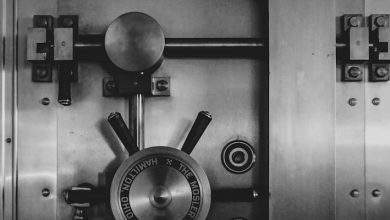The Top 5 Crypto Wallets for Beginners

- Understanding the importance of choosing the right crypto wallet
- Factors to consider when selecting a crypto wallet for beginners
- Comparing the security features of the top 5 crypto wallets
- Step-by-step guide on how to set up a crypto wallet for beginners
- Exploring the user-friendly interfaces of popular crypto wallets
- Tips for safely storing and managing your cryptocurrencies in a wallet
Understanding the importance of choosing the right crypto wallet
Cryptocurrency wallets play a crucial role in the world of digital assets. They are essential for storing, sending, and receiving cryptocurrencies securely. Choosing the right wallet is of paramount importance to ensure the safety of your funds. With the increasing popularity of cryptocurrencies, the number of wallets available in the market has also grown significantly. It is vital to understand the different types of wallets and their features to make an informed decision.
When selecting a crypto wallet, consider factors such as security, user-friendliness, supported cryptocurrencies, and backup options. Security is the most critical aspect to consider when choosing a wallet. Look for wallets that offer features like two-factor authentication, multisig functionality, and secure backup options. User-friendliness is also essential, especially for beginners who may find complex wallets confusing.
Another crucial factor to consider is the range of cryptocurrencies supported by the wallet. Ensure that the wallet you choose supports the cryptocurrencies you plan to store or trade. Additionally, having backup options like seed phrases or private keys is essential in case you lose access to your wallet.
By understanding the importance of choosing the right crypto wallet, you can protect your investments and navigate the world of cryptocurrencies with confidence. Take the time to research and compare different wallets to find the one that best suits your needs and preferences. Remember, the security of your funds depends on the wallet you choose, so choose wisely.
Factors to consider when selecting a crypto wallet for beginners
When selecting a crypto wallet for beginners, there are several important factors to consider in order to ensure a smooth and secure experience. One key factor to keep in mind is the type of wallet – whether it is a hardware wallet, software wallet, or web-based wallet. Hardware wallets are generally considered the most secure option, as they store your cryptocurrency offline and are less susceptible to hacks. On the other hand, software wallets are more convenient for beginners, as they can be easily accessed from your computer or smartphone. Another important factor to consider is the level of security offered by the wallet. Look for wallets that offer features such as two-factor authentication and multi-signature support to enhance the security of your funds. Additionally, consider the user interface of the wallet – a user-friendly interface can make it easier for beginners to navigate and understand how to use the wallet effectively. Lastly, take into account the reputation of the wallet provider and read reviews from other users to ensure that you are choosing a reliable option. By carefully considering these factors, beginners can select a crypto wallet that meets their needs and provides a secure way to store their cryptocurrency.
Comparing the security features of the top 5 crypto wallets
When comparing the security features of the top 5 cryptocurrency wallets, it is crucial to consider factors such as encryption, two-factor authentication, and cold storage capabilities.
One of the most popular wallets, **Coinbase**, offers a high level of security through its use of AES-256 encryption to protect user data. Additionally, Coinbase utilizes two-factor authentication to prevent unauthorized access to accounts. For added security, the platform also stores the majority of user funds in cold storage, making them less vulnerable to hacking attempts.
**Trezor**, another leading wallet in the market, takes security seriously by offering a hardware wallet that provides an extra layer of protection. The device generates and stores private keys offline, making it nearly impossible for hackers to gain access to them. Trezor also supports multi-signature transactions, further enhancing security for users.
**Ledger Nano S** is known for its robust security features, including a secure element chip that stores private keys and verifies transactions. The wallet also supports multiple cryptocurrencies and allows users to set up a PIN code for added protection. In addition, Ledger Nano S offers a backup and restore option, ensuring that users can recover their funds in case the device is lost or damaged.
**Exodus** is a user-friendly wallet that prioritizes security without sacrificing ease of use. The wallet encrypts private keys and transaction data on the device itself, rather than relying on a third party for security. Exodus also offers a built-in exchange feature, allowing users to trade cryptocurrencies directly within the wallet while maintaining control of their funds.
Finally, **Trust Wallet** stands out for its emphasis on security and privacy. The wallet is open-source, meaning that its code can be reviewed by anyone to ensure transparency and trustworthiness. Trust Wallet also allows users to store a wide range of cryptocurrencies and offers a decentralized exchange feature for trading assets securely.
In conclusion, when choosing a cryptocurrency wallet, it is essential to prioritize security features to protect your assets from potential threats. By comparing the security measures of the top 5 wallets, users can make an informed decision based on their individual needs and preferences.
Step-by-step guide on how to set up a crypto wallet for beginners
To set up a crypto wallet as a beginner, you must first choose a wallet provider that suits your needs. There are various options available, such as online wallets, mobile wallets, desktop wallets, and hardware wallets. Once you have chosen a wallet type, you can proceed with creating an account with the wallet provider. This typically involves providing an email address and creating a secure password.
After creating an account, you will need to secure your wallet by enabling two-factor authentication (2FA) and backing up your wallet’s recovery phrase. The recovery phrase is a series of words that can be used to recover your wallet in case you forget your password or lose access to your account. It is crucial to store this recovery phrase in a safe and secure location, as anyone with access to it can potentially steal your funds.
Next, you will need to fund your wallet by purchasing cryptocurrencies from an exchange or transferring them from another wallet. To do this, you will need to obtain your wallet’s public address, which is a unique identifier that allows others to send cryptocurrencies to your wallet. You can find your wallet’s public address by navigating to the receive or deposit section of your wallet.
Once you have funded your wallet, you can start using it to send and receive cryptocurrencies. To send funds, you will need to enter the recipient’s public address and the amount you wish to send. To receive funds, you will need to provide your public address to the sender. It is essential to double-check the recipient’s address before sending any funds, as cryptocurrency transactions are irreversible.
In conclusion, setting up a crypto wallet for beginners involves choosing a wallet provider, creating an account, securing your wallet, funding your wallet, and using it to send and receive cryptocurrencies. By following these steps, you can safely and securely manage your digital assets.
Exploring the user-friendly interfaces of popular crypto wallets
When it comes to choosing a crypto wallet as a beginner, one of the key factors to consider is the user-friendly interface. Crypto wallets vary in complexity, but the most popular ones are known for their intuitive designs that make them easy to navigate for new users.
For example, Wallet A offers a clean and simple interface that allows users to easily send and receive various cryptocurrencies. Wallet B is another popular choice among beginners, with its straightforward layout and easy-to-follow instructions for setting up and using the wallet.
When exploring the user-friendly interfaces of popular crypto wallets, it’s important to look for features such as clear navigation menus, simple transaction processes, and helpful tooltips or guides for new users. These elements can make a big difference in how easy it is to manage your cryptocurrency holdings and transactions.
Tips for safely storing and managing your cryptocurrencies in a wallet
When it comes to safely storing and managing your cryptocurrencies in a wallet, there are a few tips to keep in mind. Firstly, it is important to choose a reputable wallet provider that offers strong security features. Look for wallets that use encryption to protect your private keys and offer two-factor authentication for an extra layer of security.
Another important tip is to regularly back up your wallet. This means storing a copy of your private keys in a secure location, such as a USB drive or a piece of paper kept in a safe place. In the event that your computer crashes or your wallet is compromised, having a backup will ensure that you can still access your funds.
It is also a good idea to enable any additional security features offered by your wallet provider, such as multi-signature functionality or biometric authentication. These features can help prevent unauthorized access to your funds and provide added peace of mind.
Finally, be cautious when using public Wi-Fi networks or accessing your wallet on shared computers. Hackers can easily intercept data transmitted over unsecured networks, so it is best to only access your wallet on a secure, private connection.



